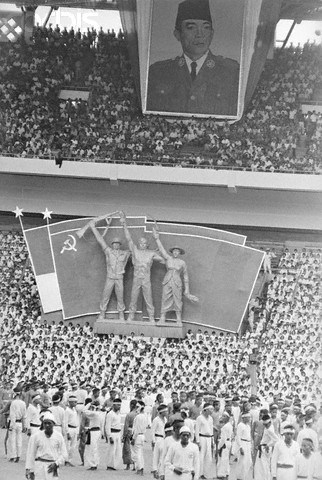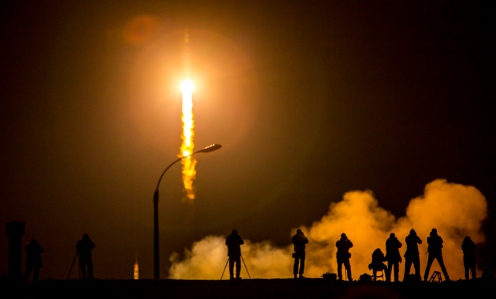
It was by chance that I watched an interesting (chilling would be fairer) documentary on TV, in which camera follows Adi Rukun a man who is “interviewing” some of his co-villagers, his parents and members of his family about the true story of the murder of his brother Ramli, one of the about one million victims (according to the bragging killers as well, 500000 according to other sources) in Indonesia’s 1965-66 massacre-extermination of members, supporters and sympathisers of Indonesian Communist Party (PKI).
I wondered how many people, if any, knew about that dark story and the large number of persons slaughtered with the most brutal methods under US and CIA directions and support, which took place during Cold War and the peak of American anti-communism, during the inland and outside US fear-inducing propaganda.
It is also worth wondering if and to what extent have things changed since then, when the US-led local army and police carried the prisoners and delivered them to their killers who stabbed, beheaded or buried them alive – in a few words using bestial practices upon Indonesian as well as Chinese population.
At the time, the atrocities were presented as “impulsive” and were attributed to people’s fear of communists, who were said to be atheists, to exchange their wives and to commit crimes. Well known accusations which would be funny if they weren’t tragic.
The way interviewed murderers (butchers) present their brutal murders and the calmness of the “hero” before them is stunning.
One of the killers says that he collected their blood and drunk it while his young daughter who claims that she didn’t know anything about it asks Adi to forgive her and her father.
As Rukun points out to several of these beasts (many of whom remain in charge until today), they show no remorse and not one of them says that he acted wrongly or that what he did was his own fault.
Not surprisingly, this regime is US supported. Until now the school teachers continue to propagandise against communists, to distort facts and to induce fear by telling to 6-7 years creepy stories attributed to communists. We watch Adi trying to “repair the damage” by telling the true story to his son.
The country remains in turmoil as poverty and injustice induce uprisings – like in many places of the world.
The question is which and to what extent certain revolts and acts of “radicalism” (as reported by the Reuters in “Indonesia hopes village spending will counter radicalism“) are impulsive or directed provocations.
Careful interpretation in necessary. Especially under the lights of history like this.
With a little research we found that the documentary is The Look of Silence of Joshua Oppenheimer.
According to The Conversation which presented the film in November 2014:
«The companion piece to his Oscar-nominated 2012 film The Act of Killing deals with a survivor’s quest for justice.[…]
It is this rupture – and not the cohesiveness of the “Indonesia as a whole” that explains why so many are invested in Oppenheimer’s project, why “Anonymous” crews support the production, and why it was possible to screen The Act of Killing more than 1,000 times throughout the country.
Despite the persisting cultural movement since Suharto’s downfall, the infrastructures that prevent Indonesians from contesting the official narrative of 1965-66 remain unchanged. We need structural changes within Indonesia to do this.»
In the article of January 2014 about the previous film, The Act of Killing, an equally if not more nerve challenging presentation of the criminals, The Conversation writes:
«Academy Award nominations rarely enter into the domain of politics, and certainly have not delved into Indonesian politics in the past. This year, however, is different.
US-British director Joshua Oppenheimer’s film The Act of Killing has already won numerous international awards and has now been nominated for an Oscar for Best Documentary Feature.
The film has received rave reviews from film critics, as well as one off-beat (and frankly misleading and illogical) paean from Slovenian Marxist philosopher, Slavoj Zizek.
Confronting, controversial, The Act of Killing aims to explain the politics of the past in Indonesia. The documentary presents two connected aspects of Indonesia: the anti-communist killings of 1965-1969; and the role of gangsters in present-day politics.»
It is one of the stories which remain buried deeper than the victims (many of whom in this case were thrown in Snake River) and it is surely a story worth spreading.
One of the killers describes with great indifference that no one was eating river fishes after the slaughter because fishes were eating people.
A safe conclusion would also be that any dictatorship, any inhuman, violent, sadistic regime and any human rights violating or illegal government is good as long as US “approves” it!
The trailer of The Look of Silence:
In 2014, an article of the New York Times was titled: ‘The Act of Killing’ Film Fails to Stir Indonesia.
No wonder at all, as it is doubtful if anyone would dare to watch it under the fear of retaliation and danger for his life (the same danger which his mother and his wife point out to Adi Rukun ).
An interesting and encouraging outcome from this presentation of NYT is the following letter and mostly its senders.
«Mass Slaughter in Indonesia
MARCH 6, 2014
To the Editor:
(of NYT)
“ ‘Act of Killing’ Film Fails to Stir Indonesia” (news article, March 2) describes how Indonesia’s media has largely ignored Joshua Oppenheimer’s powerful, Oscar-nominated documentary about General Suharto’s murder of between a half million and a million alleged Communists in 1965 and 1966. It doesn’t even mention the United States’ contribution to what The Times described as “one of the most savage mass slaughters of modern political history.”
As we report in our “Untold History of the United States” documentary film series and book, the Central Intelligence Agency had targeted Sukarno, Suharto’s predecessor, for years, and in 1965 provided a “kill list” containing thousands of names. The State Department’s Indonesia expert stated, “No one cared, as long as they were Communists, that they were butchered.” Suharto’s dictatorship lasted 32 years.
Conditions have improved since his ouster, but the horrors of his rule and American complicity in his crimes must never be forgotten.
OLIVER STONE
PETER KUZNICK
Los Angeles, March 3, 2014
Mr. Stone is the film director, and Mr. Kuznick is a professor of history at American University.»
More about the story (history) and the massacre:
The history and evidence “on how the October 1 coup was triggered” are presented in the article
US orchestrated Suharto’s 1965-66 slaughter in Indonesia of World Socialist Web Site.
A US Department of State recent presentation of “US Relations With Indonesia” (for anyone interested, only part of the URL, state.gov, to avoid tracking).
Macrohistory and World Timeline also gives and analytical version of the facts in Indonesia and the Great Slaughter and Sukarno Loses Power
The relative book China, class collaboration, and the killing fields of Indonesia in 1965, of James Robb is presented here.
All in all, it is worth taking a look and learning the facts about a rarely said history.

Reblogged this on My World, Your World, One World and commented:
Another bit of world history I had not heard about. Look up the various references – can we learn?
LikeLike
i have reblogged this post – saying “Another bit of world history I had not heard about. Look up the various references – can we learn?” Thanks for bringing it to attention.
LikeLike
Thank you for reblogging the post. I am glad that you too think it’s an important historic page with… extensions.
LikeLike